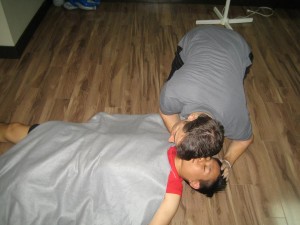An electric shock usually occurs once an individual comes in contact with an electrical source. As a result, the electricity flows through a portion of the body resulting to shock. Individuals who are exposed to electrical energy will not cause any injury at all or may result to overwhelming damage or even death. Even for minor electrical shock, it is still best to be examined by a doctor.
Causes of electrical shock
Adults and teenagers are susceptible to electrical shock due to exploration or exposure at work. Most of the cases are linked to job related injuries. There are different variables that determine the possible injuries that might occur, if any. The common variables include the type of current (AC or DC), amount of current and pathway of the electricity. Obviously, low voltage electricity will not cause any injury but exposure to high voltage electricity can cause serious damage.
In case you are going to help an individual who sustained a high voltage shock, you have to be careful that you will not end up as a second victim. If the high voltage line has dropped to the ground, there might be a circle of current spreading out from the tip of the line. The best move is to call for emergency assistance right away. In doing so, the electricity company will be informed so that power will be shut down.
[youtube url=”http://www.youtube.com/watch?v=J8JebyiOHv0″]Symptoms of electrical shock
An individual who has suffered an electrical shock usually have minimal external evidence of the injury or may have evident burns that are severe. In some cases, an individual could even be in cardiac arrest.
The danger from an electrical shock usually depends on the current type, voltage, how the current traveled through the body, overall health of the individual and how quick the treatment was delivered. It is best to call for emergency assistance if any of these signs or symptoms is present:
- Arrhythmias
- Cardiac arrest
- Respiratory failure
- Burns
- Seizures
- Muscle pain and contractions
- Unconsciousness
- Tingling and numbness
Steps to follow while waiting for medical assistance

- Assess the situation first and do not touch the individual since he/she might still be in contact with the electrical source.
- Switch off the electricity source if possible. If this is not possible, simply move the individual away from the source by using a dry non-conducting object that is made out of wood, plastic or cardboard.
- Assess for signs of circulation. In case absent, start CPR right away.
- Prevent shock by positioning the individual in lying position with the head slightly lower than the trunk with legs elevated.
Even if the individual has no evident signs or symptoms of injury after an electric shock, it is still best to consult a doctor to assess for any internal injuries. In most cases, the injuries are internal without any external signs. This is the reason why attending a first aid class is vital so that you know the appropriate steps to take if an individual suffers from an electrical shock.
